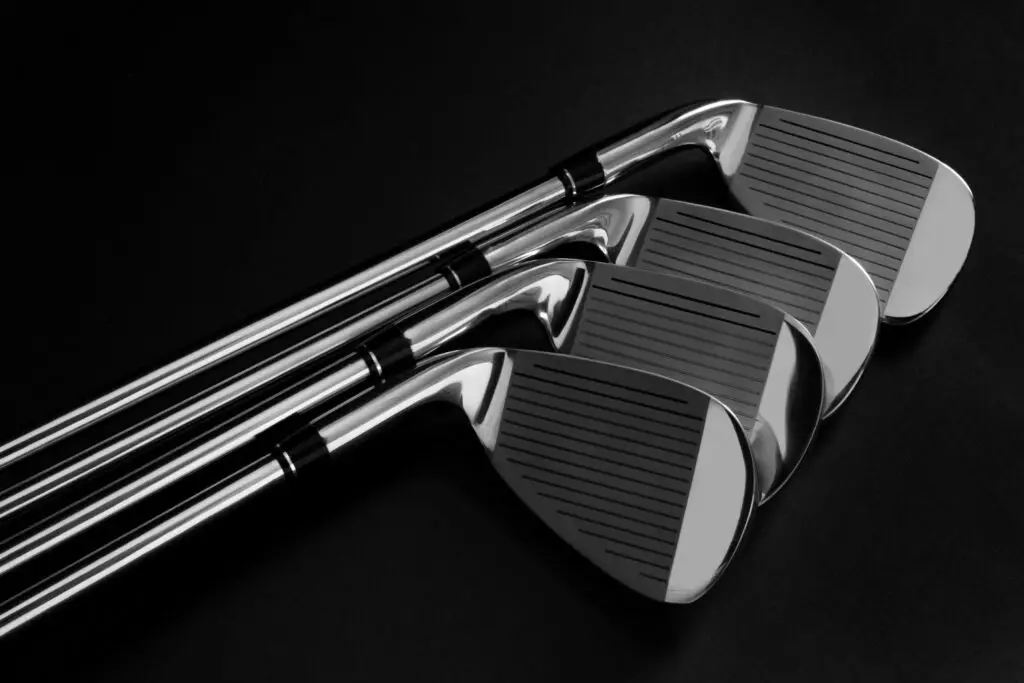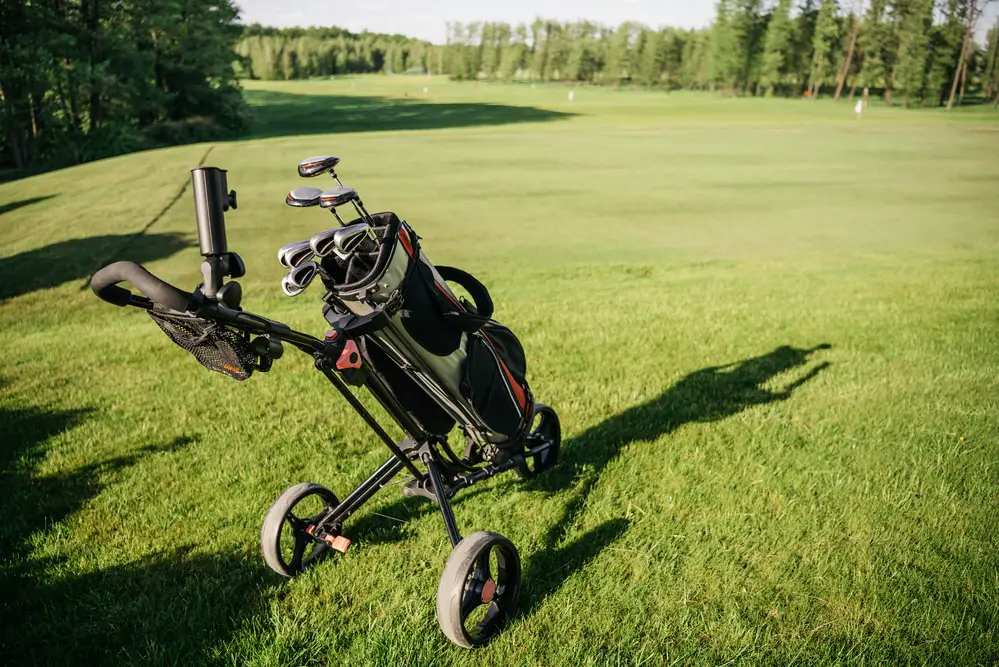Last Updated on November 2, 2023
Golf enthusiasts have long sought the best materials and tools to help improve their performance on the green. One material that has become increasingly popular in recent years is ceramic, which is used for golf club heads. But why exactly is ceramic better for golf clubs than other materials? In this article, we’ll explore the benefits of using ceramic for golf club heads and explain why it’s becoming more widely adopted by professional players across the world.
Properties of Ceramic
Ceramics are distinctive from other materials due to their unique properties. The special composition of ceramics is one reason why it’s often used for golf club heads. Ceramic consists mainly of silicates and oxides, which provide strength, durability, and resistance to corrosion. This makes ceramic an ideal material for items that need to be strong yet lightweight.
The structure of ceramics also contributes to its advantageous qualities. It has a rigid molecular structure which gives it great heat and shock resistance as well as low thermal expansion rates. Additionally, these features make the ceramic quite hard and stiff – important characteristics when choosing a material for golf clubs. As such, it can easily withstand impacts without breaking or bending over time. To sum up, this makes ceramic a reliable choice for constructing golf club heads as its properties ensure long-term performance with minimal maintenance requirements.
Benefits of Ceramic for Golf Clubs

Ceramic is a popular material for golf club heads due to its ability to enhance performance. Its temperature stability and low weight make it ideal for players seeking precision and accuracy on the course. Here are some of the main benefits of ceramic in golf clubs:
- Durability – Ceramic is more durable than steel, meaning that your clubs won’t suffer from wear and tear over time.
- Accuracy – The lightweight nature of ceramic helps with better control of shots, which leads to increased accuracy for players.
- Temperature Stability – Unlike metal materials, ceramic does not expand or contract when exposed to extreme temperatures, ensuring consistent performance throughout different weather conditions.
- Weight Reduction – A lighter club head means that you can swing faster without sacrificing power or distance. This makes it easier to effectively hit long shots and precise approach shots into greens.
Overall, ceramic provides many advantages for those looking to improve their golf game. It offers enhanced durability, improved accuracy, temperature stability, and reduced weight compared to traditional metal components found in other types of clubs. With these benefits in mind, there’s no doubt why so many professional golfers choose this type of material for their equipment.
Weight Advantage
Ceramic is a much lighter material than traditional metals used for golf club head construction. Its lightweight nature makes it ideal for creating more compact and aerodynamic designs, allowing the golfer to gain greater control over their swing as well as improved distance off the tee.
Its light weight also offers significant advantages when it comes to balance. The centre of gravity can be placed in an optimal spot, offering better stability and accuracy during shots. This means balls will stay on line longer and fly truer with less backspin or sidespin induced by the heavier materials used in other clubs. In addition, due to its low profile design, ceramic heads have a higher moment-of-inertia (MOI) which produces minimal twists resulting from off-centre hits – leading to straighter shots even if there’s been some misalignment at impact. Ultimately this translates into enhanced performance on the course.
Temperature Resistance
Ceramic is an extremely temperature-resistant material, which makes it a great choice for golf club heads. It offers heat resistance up to 2000°F and cold resistance down to -300°F. This superior thermal endurance allows ceramic materials to be used in applications where traditional metals would fail due to extreme temperatures. In other words, they can withstand the hottest days on the golf course without becoming deformed or warped. They also won’t corrode when exposed to moisture or humidity, making them highly durable overall.
This durability not only ensures that your clubs will last longer but also helps you maintain control of your shots with greater accuracy and consistency as well. Ceramic’s temperature resistance gives you peace of mind knowing that even during those hot summer rounds, your clubs will remain stable and reliable no matter how hard you swing.
Maintenance and Care
Caring for ceramic golf club heads is relatively easy. To keep them in the best condition, it’s important to clean them after each use with a soft cloth and warm water. It’s also helpful to apply mild detergent or soap when cleaning if needed. You should avoid using any harsh chemicals such as acetone or other solvents on your clubs, as these can damage the finish of the head and shafts.
When storing your clubs, make sure they are kept away from extreme temperatures, which could affect their performance. If you’re planning to store your clubs during cold winter months, consider wrapping them in some insulation material, such as bubble wrap, to help protect against condensation that could form on the surface of your clubs. Furthermore, it’s essential to inspect all components of your golf clubs regularly for signs of wear and tear and replace any worn parts promptly so you don’t compromise their playability.
Pros and Cons

Moving on from maintenance and care, the pros and cons of ceramic golf club heads must be considered. Ceramic is a much lighter material than steel or titanium, making it easier for players to swing faster with more power. They are also extremely durable; ceramic club heads won’t dent or break easily, even when hit against a hard surface or dropped onto the ground. This makes them an ideal choice for those who want their clubs to last longer.
On the other hand, ceramic club heads can sometimes be too light, which might cause difficulty in controlling shots due to excessive speed. Additionally, they tend to cost more than other materials, so they may not suit all budgets.
Frequently Asked Questions
How Much Lighter Are Ceramic Golf Club Heads Compared to Steel?
When comparing ceramic golf club heads to steel, one of the most noticeable differences is weight. Ceramic materials are much lighter than steel, making them a desirable choice for many golfers. This lightness can offer substantial benefits in terms of swing speed and accuracy as well as overall performance on the course.
The difference in weight between ceramic and steel becomes even more pronounced when taking into account that different types of ceramic material may be used depending on the needs of the golfer. For instance, some ceramics, like carbon fibre-reinforced composites, are extremely lightweight and provide additional strength for longer shots. On the other hand, titanium-based ceramics still have a significant advantage over regular stainless steel but are heavier than carbon fibre composites. As such, it’s important to consider what type of ceramic is best suited for your particular game before investing in a set of clubs with these materials.
What Type of Terrain Is Best Suited for Ceramic Golf Club Heads?
Golf courses come in all sorts of shapes and sizes, each posing different challenges for players depending on its layout. For ceramic golf club heads specifically, those that feature a lot of rough terrain or sand bunkers can benefit greatly from them as they offer increased control and precision during shots. The durability offered by these club heads also means they will stay intact when hitting off any uneven surfaces like tree roots or grassy hillsides – something steel-headed clubs may struggle with over time.
This makes ceramic golf club heads ideal for those looking to play courses regularly that require more accuracy than power, while it must be noted this doesn’t exclude them from being effective on flat fairways either! Ultimately choosing between steel or ceramic will depend largely on personal preference, but understanding the differences between terrains and what your chosen material offers should help make the selection process much easier.
How Resistant to Impact Are Ceramic Golf Club Heads?
Ceramic’s unique properties make it one of the most popular materials used in modern-day golf clubs. Its high level of impact resistance ensures that even after years of use, your clubs will remain intact with minimal wear and tear. Additionally, this material is highly resistant to corrosion, meaning you don’t need to spend extra money on maintenance or repairs due to rusting issues. As a result, ceramic golf clubs provide excellent value for money over time as they require less upkeep than other materials do.
Overall, ceramic offers an impressive level of protection against impacts while remaining light enough not to hinder performance on the course. With its low maintenance requirements and long lifespan, investing in ceramic golf club heads can be a great option for any golfer looking for reliable equipment at an affordable price point.
Conclusion
Overall, it’s clear that ceramic golf clubs can significantly enhance a player’s game due to the increased accuracy, power and control offered by these lightweight clubs. With regular maintenance, any golfer will find a great deal of enjoyment in investing in ceramic clubs as opposed to traditional steel designs.
If you’re considering upgrading your current set of clubs or purchasing a new one entirely, then definitely consider opting for a set made from ceramic – you won’t regret it!


